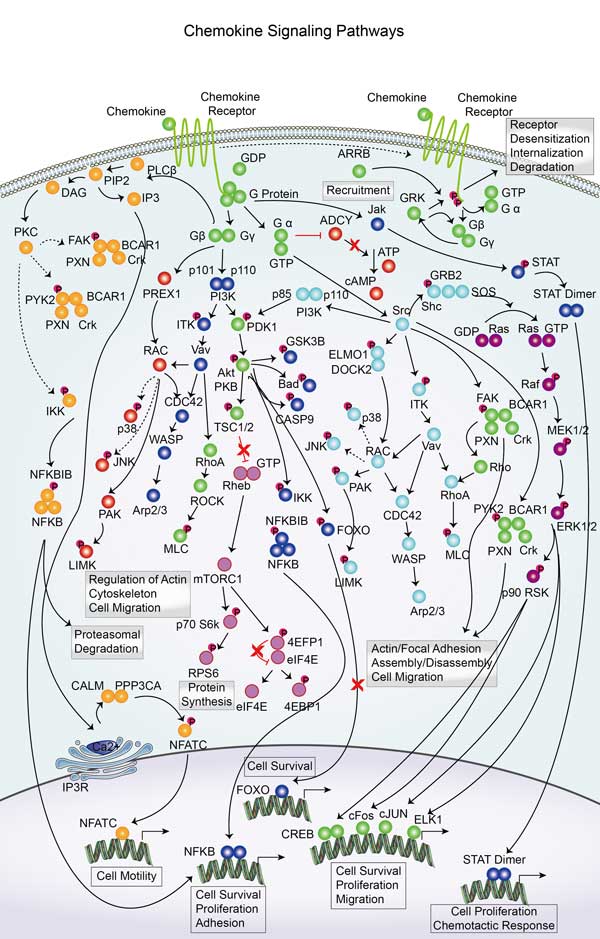ADCY1
-
Official Full Name
adenylate cyclase 1 (brain) -
Overview
This gene encodes a form of adenylate cyclase expressed in brain. A similar protein in mouse is involved in pattern formation of the brain. -
Synonyms
ADCY1;adenylate cyclase 1 (brain);adenylate cyclase type 1;adenyl cyclase;Adenylate cyclase 1;adenylate cyclase type I;ATP pyrophosphate lyase;Brain adenylate cyclase 1;OTTHUMP00000207996;adenylyl cyclase 1;ATP pyrophosphate-lyase 1;3,5-cyclic AMP synthetase;Ca(2+)/calmodulin-activated adenylyl cyclase;AC1
Recombinant Proteins
- Mouse
- Human
- Bovine
- Mammalian Cells
- E.Coli/Yeast
- E.coli
- HEK293
- His
- GST
- T7
- Avi
- Fc
Involved Pathway
ADCY1 involved in several pathways and played different roles in them. We selected most pathways ADCY1 participated on our site, such as Activation of GABAB receptors,Activation of NMDA receptor upon glutamate binding and postsynaptic events,Adenylate cyclase activating pathway, which may be useful for your reference. Also, other proteins which involved in the same pathway with ADCY1 were listed below. Creative BioMart supplied nearly all the proteins listed, you can search them on our site.
| Pathway Name | Pathway Related Protein |
|---|---|
| Amoebiasis | CD1d1,ARG1,COL24A1,Casp3,C9,RAB7,IL12A,PRKACB,TNF,SERPINB1A |
| Aquaporin-mediated transport | MYO5B,AQP1A.1,ADCY8,AQP1A.2,AQP10,GNB3A,AQP11,MIPA,PRKAR1AA,MIP |
| Adenylate cyclase inhibitory pathway | ADCY7,ADCY9,ADCY3,ADCY6,ADCY8 |
| Adenylate cyclase activating pathway | ADCY7,ADCY3,ADCY9,ADCY8,ADCY6 |
| Aldosterone synthesis and secretion | SLC14A2,CACNA1H,NPR1,CAMK1G,PRKACG,AGTR1A,PRKCB,CALM4,CALM3,CYP21A2 |
| Activation of NMDA receptor upon glutamate binding and postsynaptic events | CREB1B,ADCY3,CREB1,CAMKK1B,NEFLB,AKAP9,PDPK1A,DLG4,SLC14A2,ADCY8 |
| Activation of GABAB receptors | GNB3B,KCNJ4,ADCY7,KCNJ9,GNB3A,ADCY6,KCNJ10,KCNJ3,KCNJ5,KCNJ2A |
| Adrenergic signaling in cardiomyocytes | CACNG4,CACNG8,ATP1A2,CALM2A,CALM1,ATP1B2,PPP1CBL,CREB3L3A,PIK3R3A,ATF4 |
Protein Function
ADCY1 has several biochemical functions, for example, ATP binding,adenylate cyclase activity,calcium- and calmodulin-responsive adenylate cyclase activity. Some of the functions are cooperated with other proteins, some of the functions could acted by ADCY1 itself. We selected most functions ADCY1 had, and list some proteins which have the same functions with ADCY1. You can find most of the proteins on our site.
| Function | Related Protein |
|---|---|
| calcium- and calmodulin-responsive adenylate cyclase activity | ADCY6,ADCY3,ADCY8 |
| metal ion binding | TRIM35-19,ARID2,MBNL1,GM757,TRP63,NEK9,DSG1C,ITGAM,PHOSPHO2,ZFP346 |
| ATP binding | ATP2C2,UBE2J2,SMARCA2,CLCN6,SMARCA4A,RRM1,ABCA3,THG1L,CDC34B,AKT3A |
| calmodulin binding | UBR4,CNN2,NOS3,CAMK2D1,TJP1,MYH3,TRPV1,MYH1E,RYR3,MYH4 |
| adenylate cyclase activity | ADCY8,ADCY3,Adcy4,GNAS,ADCY1A,ADCY1B,ADCY7,ADCY2B,ADCY9,ADCY6 |
Interacting Protein
ADCY1 has direct interactions with proteins and molecules. Those interactions were detected by several methods such as yeast two hybrid, co-IP, pull-down and so on. We selected proteins and molecules interacted with ADCY1 here. Most of them are supplied by our site. Hope this information will be useful for your research of ADCY1.
ADCY1 Related Signal Pathway
Resources
Gene Families
Related Services
Related Products
References
- Wang, XZ; Maynard, JA; et al. The Bordetella Adenylate Cyclase Repeat-in-Toxin (RTX) Domain Is Immunodominant and Elicits Neutralizing Antibodies. JOURNAL OF BIOLOGICAL CHEMISTRY 290:3576-3591(2015).
- Chae, JJ; Park, YH; et al. Connecting Two Pathways Through Ca2+ Signaling: NLRP3 Inflammasome Activation Induced by a Hypermorphic PLCG2 Mutation. ARTHRITIS & RHEUMATOLOGY 67:563-567(2015).




